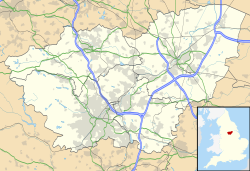History
The name Wentworth probably derives from the Old English Wintraworð meaning 'Wintra's enclosure'. [4]
The village's history is dominated by the Wentworth, Watson-Wentworth and Wentworth-Fitzwilliam families who lived in Wentworth Woodhouse. They also owned perhaps most of the land in the village. Wentworth gained some independence when the Fitzwilliam family line ended in 1979. [5]
The village dates back to at least 1066, according to the Domesday Book. About 1250 Robert Wentworth married Emma Woodhouse, beginning the Wentworth-Woodhouse line; the family lived in the area for over 450 years. The lands then passed to the Watson family when William Wentworth, 2nd Earl of Strafford died without heir; the Watsons held the land until 1782. During this time most of the local follies were built. The Fitzwilliam ownership ended in 1979 when Thomas Wentworth-Fitzwilliam, 10th Earl Fitzwilliam died.
The Old Holy Trinity Church, the village's first church was a chapel of ease to All Saints Church, Wath Upon Dearne. Like its successor it was the principal place of worship on the estate, dedicated to the Holy Trinity, and is thought to date to the 12th century. James Nasmyth, the developer of the steam hammer, and his bride Anne Hartop were married there on 16 June 1840. [6]
The new church, Holy Trinity Parish Church, was commissioned in 1872 by the 6th Earl Fitzwilliam to the design of John Loughborough Pearson, an exponent of the Gothic Revival style, and was consecrated in 1877 by the Archbishop of York. [7]
In September 1999 Wentworth Brewery was established at the old power station on the Wentworth estate. The Brewery ceased trading at the beginning of June 2016. [8]
This page is based on this
Wikipedia article Text is available under the
CC BY-SA 4.0 license; additional terms may apply.
Images, videos and audio are available under their respective licenses.

